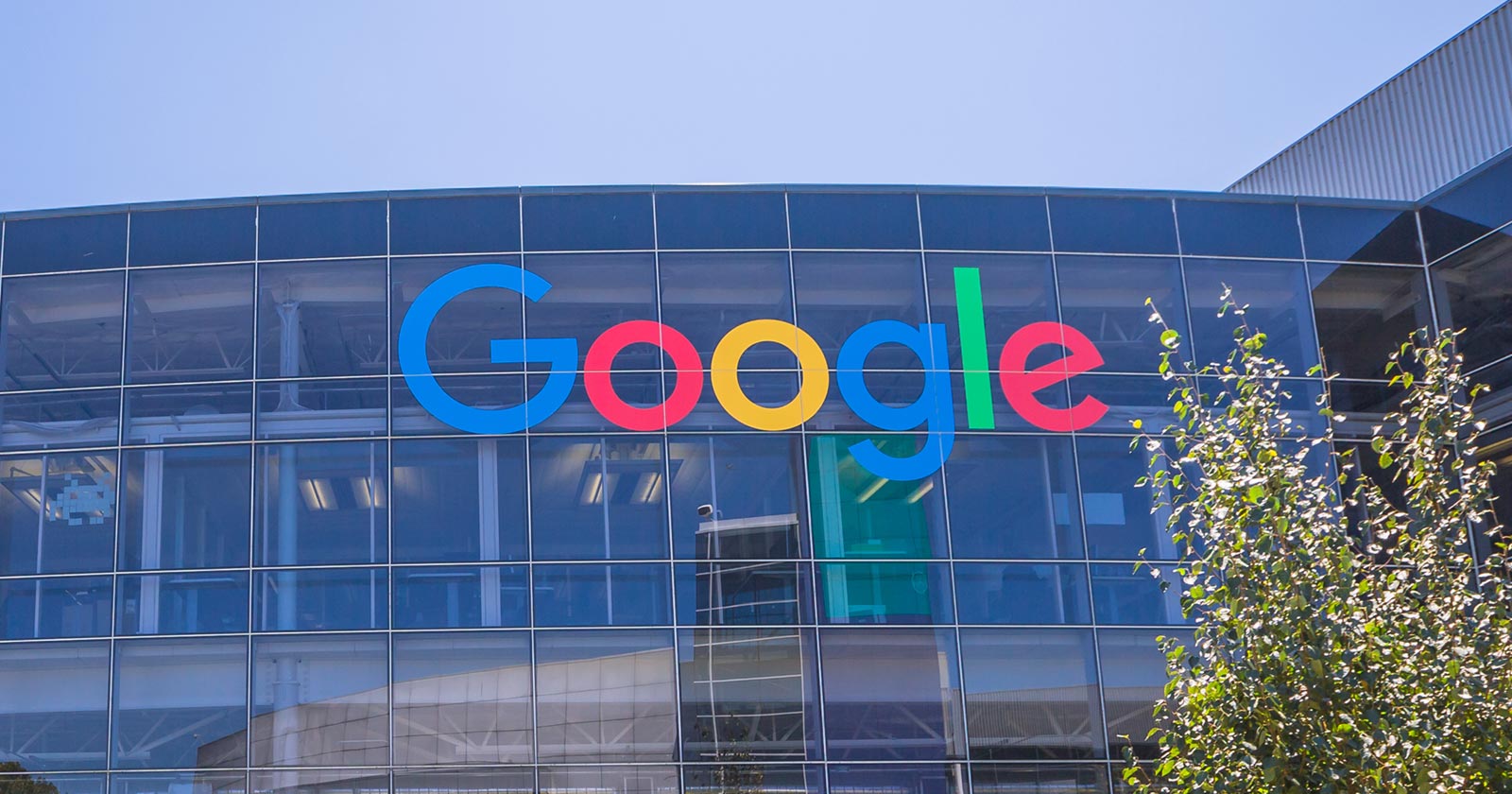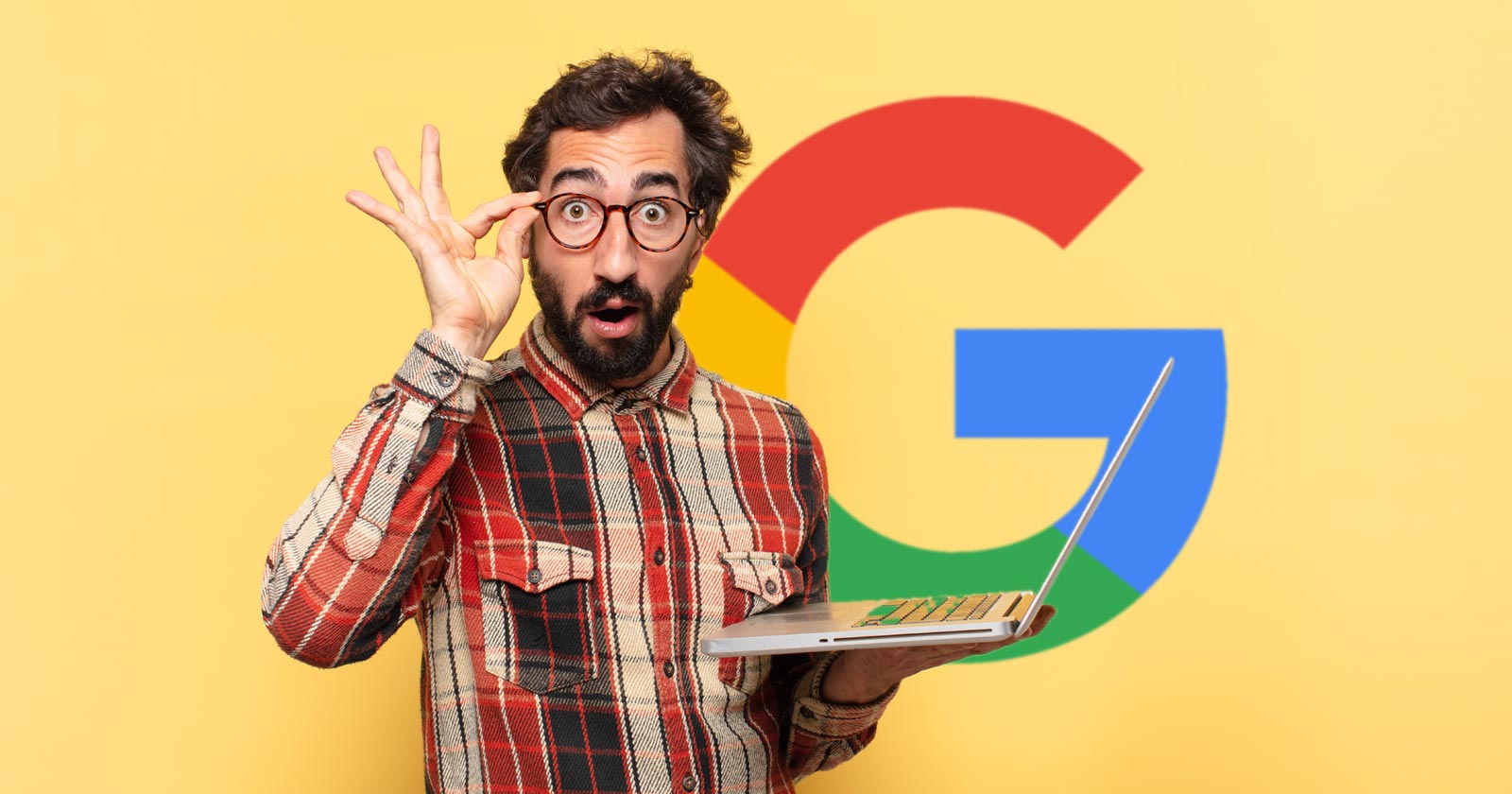SEO
What It Is & How To Use It

Link attributes abound in the world of SEO, including link title, alternative text, and others.
In fact, there are newer rules you need to use if you wish to remain up-to-date on your link optimization.
These types of attributes are important. Not only do they help clarify the context of your link, but they also help to control how Google perceives it.
Whether it’s a paid link or free, you need to make sure you are using the correct attributes so Google does not misunderstand the meaning of your links, resulting in substandard results.
And SEO is all about results!
The way you get to better results is by applying best practices and ensuring that you don’t run afoul of Google’s Webmaster Guidelines.
Using duplicate alternative text as the link title text is not an okay practice, for example. There are different ways to use alternative text and title text, both of which an SEO pro must pay attention to.
The following includes an overview of the link title attribute and the things you need to know about it in order to be successful.
Let’s dive right in!
Link Title Attribute Best Practices
You should use a link title when you are providing more information about the link.
Don’t use a link title to provide the information over again, as this is a usability fail that will only result in annoying your users.
Have you ever run into an incident where the exact link title showed up when you hovered over it?
You didn’t need to know something that’s already visible on the page, right?
Some of your users may think that way, as well.
The best question you can ask yourself when optimizing is: Will this add information to my link or will it just annoy my users with duplication?
Focus On Optimizing For Users, Rather Than Search Engines
Optimize for your users, rather than search engines.
Yes, this is nothing new. But it is effective.
Don’t:
- Overstuff the link title attribute with keywords.
- Duplicate the topic title.
Do:
- Write the link title so that something unique pops up for users.
- Write the link title with users in mind.
The link anchor text is supposed to be the name of the link itself.
The link title attribute is supposed to provide more information about where the link will send the user who clicks on that link.
How, Exactly, Should You Be Using The Link Title Attribute?
Google’s Search Advocate John Mueller has detailed this in a past Google Webmaster Office Hours Hangout. This discussion begins at the 00:42 point.
Google uses both the title attribute and anchor text together within the link in order to increase their understanding of the context of the link.
He explains that you can test this with a word that you made up, and add it as a title attribute.
Then, you can wait a bit for things to be indexed, and then you can examine the results of that after it has been indexed.
Ideally, one could use the title attribute in order to cover information that’s missing in the anchor text. And Google will use these two attributes together when crawling your links.
Does The Link Title Attribute Help Support Accessibility?
There is some disagreement among SEO pros as to whether accessibility should not be included in SEO best practices.
I’m of the opinion that accessibility, while not a direct ranking factor, is one of those indirect ranking factors that are indisputable in terms of their value.
This will help improve your client’s site and their bottom line by reducing accessibility lawsuits for not including basic accessibility items like alternative text.
(Being inclusive also expands your audience and customer base.)
Alternative text, or alt text for short, is an image attribute that gives text to screen readers for the blind.
In principle, you would think the link title attribute works in a similar way.
However, this is not the case.
The W3C states the following:
“Current user agents and assistive technology provide no feedback to the user when links have title attribute content available.
Some graphical user agents will display a tool tip when the mouse hovers above an anchor element containing a title attribute. However, current user agents do not provide access to title attribute content via the keyboard.
The tool tip in some common user agents disappears after a short period of time (approximately five seconds).
This can cause difficulty accessing title attribute content for those users who can use a mouse but have fine motor skill impairment, and may result in difficulties for users who need more time to read the tool tip.
Current graphical user agents do not provide mechanisms to control the presentation of title attribute content.
The user cannot resize the tool tip text or control the foreground and background colors.
The placement and location of the tool tip cannot be controlled by users, causing some screen magnifier users to be unable to access meaningful portions of the title attribute content because the tool tip cannot be fully displayed within the viewport.
Some user agents allow access to supplementary information through the context menu.
For example, the keystroke combination Shift+F10 followed by P will display the title attribute content, along with other supplementary information in Mozilla/Firefox.”
It’s not perfect, so it is almost impossible to provide a good way to implement accessibility in this scenario.
This is why it is important to take a more in-depth look at guidelines for these elements.
They don’t always work the way you think they should and, in some cases, changes to the elements can happen in a flash also.
How to Use The Link Title Attribute: An Example
Here’s an example of how to use the link title attribute correctly:
<a href=”https://www.searchenginejournal.com/” title=”This is a link to the Search Engine Journal website”>SEJ</a>
What Do The Search Engines Say?
We can speculate all day long, but at the end of the day, the final word of the search engines on the link title attribute is this:
“The ‘title’ attribute is a bit different: It ‘offers advisory information about the element for which it is set.’
As the Googlebot does not see the images directly, we generally concentrate on the information provided in the ‘alt’ attribute.
Feel free to supplement the ‘alt’ attribute with ‘title’ and other attributes if they provide value to your users!”
This is what Bing has to say:
“Think of the anchor text as your primary description of the linked page.
But if you do inline linking within the paragraphs of your body text, you need to maintain the natural, logical flow of the language in the paragraph, which can limit your link text description.
As such, you can use the title attribute to add additional keyword information about the linked page without adversely affecting the readability of the text for the end user.”
What Do Other SEO Professionals Say?
Based on the opinions of several people who have done SEO for years, the link title attribute carries no weight on search engines.
There is also some usability concern when it comes to the link title attribute.
For most browsers, it will show up when you move your cursor over the link.
Because of this, you don’t have to copy the anchor text within a title attribute. If the title attribute is unable to provide additional information, you should not use it.
“Do not add link titles to all links: If it is obvious from the link anchor and its surrounding context where the link will lead, then a link title will reduce usability by being one more thing users have to look at.”
The Rise In Accessibility Lawsuits: Should You Be Concerned?
On January 4, 2019, it was reported that Beyonce.com was sued over accessibility issues.
Target has also been sued over accessibility issues in the past.
Accessibility should always be a concern for SEO professionals because you are supposed to be driving revenue and increasing ROI for your clients.
When an accessibility lawsuit happens, your client loses money, or ROI, from the lack of these efforts. In addition, they are usually not happy about your website.
Your efforts as an SEO should include making sure that link title attributes and links are visible and usable by your users, regardless of their abilities.
Focus On Your Users, Not The Search Engines
When writing link title attributes, be sure to write for users, and don’t create spammy text just for the search engines.
Because, it will be users who are – primarily – going to be using this title text.
At the end of the day, accessibility matters:
- Don’t make links hard to read.
- Don’t make link titles difficult to use, or understand.
Make things look great while focusing on the user experience in order to make sure that your users are happy and elated to be on your website.
TL;DR: Key Takeaways
The key takeaways include the following:
- Don’t use duplicate alt and title attributes in your links.
- Do focus on your users when writing these, but also focus on what the search engines will crawl.
- Do focus on what missing information will be added by using the title attribute.
- Do optimize your links if the title attribute adds new information.
- Do not use the title attribute if it does not add new information.
- Make sure that you use these attributes in such a way that fosters great accessibility for users with disabilities.
- Don’t over-optimize. Avoid adding title attributes to links that don’t need them.
If you are in doubt about whether a link title attribute is something that is going to benefit you, it’s probably best not to use it. And instead, consult John Mueller or another SEO professional that you trust.
John is known to hang out on Twitter and answer burning questions from SEO professionals around the world, in addition to his office hours hangouts.
More Resources:
Featured Image: BestForBest/Shutterstock
SEO
Google Clarifies Vacation Rental Structured Data

Google’s structured data documentation for vacation rentals was recently updated to require more specific data in a change that is more of a clarification than it is a change in requirements. This change was made without any formal announcement or notation in the developer pages changelog.
Vacation Rentals Structured Data
These specific structured data types makes vacation rental information eligible for rich results that are specific to these kinds of rentals. However it’s not available to all websites. Vacation rental owners are required to be connected to a Google Technical Account Manager and have access to the Google Hotel Center platform.
VacationRental Structured Data Type Definitions
The primary changes were made to the structured data property type definitions where Google defines what the required and recommended property types are.
The changes to the documentation is in the section governing the Recommended properties and represents a clarification of the recommendations rather than a change in what Google requires.
The primary changes were made to the structured data type definitions where Google defines what the required and recommended property types are.
The changes to the documentation is in the section governing the Recommended properties and represents a clarification of the recommendations rather than a change in what Google requires.
Address Schema.org property
This is a subtle change but it’s important because it now represents a recommendation that requires more precise data.
This is what was recommended before:
“streetAddress”: “1600 Amphitheatre Pkwy.”
This is what it now recommends:
“streetAddress”: “1600 Amphitheatre Pkwy, Unit 6E”
Address Property Change Description
The most substantial change is to the description of what the “address” property is, becoming more descriptive and precise about what is recommended.
The description before the change:
PostalAddress
Information about the street address of the listing. Include all properties that apply to your country.
The description after the change:
PostalAddress
The full, physical location of the vacation rental.
Provide the street address, city, state or region, and postal code for the vacation rental. If applicable, provide the unit or apartment number.
Note that P.O. boxes or other mailing-only addresses are not considered full, physical addresses.
This is repeated in the section for address.streetAddress property
This is what it recommended before:
address.streetAddress Text
The full street address of your vacation listing.
And this is what it recommends now:
address.streetAddress Text
The full street address of your vacation listing, including the unit or apartment number if applicable.
Clarification And Not A Change
Although these updates don’t represent a change in Google’s guidance they are nonetheless important because they offer clearer guidance with less ambiguity as to what is recommended.
Read the updated structured data guidance:
Vacation rental (VacationRental) structured data
Featured Image by Shutterstock/New Africa
SEO
Google On Hyphens In Domain Names

Google’s John Mueller answered a question on Reddit about why people don’t use hyphens with domains and if there was something to be concerned about that they were missing.
Domain Names With Hyphens For SEO
I’ve been working online for 25 years and I remember when using hyphens in domains was something that affiliates did for SEO when Google was still influenced by keywords in the domain, URL, and basically keywords anywhere on the webpage. It wasn’t something that everyone did, it was mainly something that was popular with some affiliate marketers.
Another reason for choosing domain names with keywords in them was that site visitors tended to convert at a higher rate because the keywords essentially prequalified the site visitor. I know from experience how useful two-keyword domains (and one word domain names) are for conversions, as long as they didn’t have hyphens in them.
A consideration that caused hyphenated domain names to fall out of favor is that they have an untrustworthy appearance and that can work against conversion rates because trustworthiness is an important factor for conversions.
Lastly, hyphenated domain names look tacky. Why go with tacky when a brandable domain is easier for building trust and conversions?
Domain Name Question Asked On Reddit
This is the question asked on Reddit:
“Why don’t people use a lot of domains with hyphens? Is there something concerning about it? I understand when you tell it out loud people make miss hyphen in search.”
And this is Mueller’s response:
“It used to be that domain names with a lot of hyphens were considered (by users? or by SEOs assuming users would? it’s been a while) to be less serious – since they could imply that you weren’t able to get the domain name with fewer hyphens. Nowadays there are a lot of top-level-domains so it’s less of a thing.
My main recommendation is to pick something for the long run (assuming that’s what you’re aiming for), and not to be overly keyword focused (because life is too short to box yourself into a corner – make good things, course-correct over time, don’t let a domain-name limit what you do online). The web is full of awkward, keyword-focused short-lived low-effort takes made for SEO — make something truly awesome that people will ask for by name. If that takes a hyphen in the name – go for it.”
Pick A Domain Name That Can Grow
Mueller is right about picking a domain name that won’t lock your site into one topic. When a site grows in popularity the natural growth path is to expand the range of topics the site coves. But that’s hard to do when the domain is locked into one rigid keyword phrase. That’s one of the downsides of picking a “Best + keyword + reviews” domain, too. Those domains can’t grow bigger and look tacky, too.
That’s why I’ve always recommended brandable domains that are memorable and encourage trust in some way.
Read the post on Reddit:
Read Mueller’s response here.
Featured Image by Shutterstock/Benny Marty
SEO
Reddit Post Ranks On Google In 5 Minutes

Google’s Danny Sullivan disputed the assertions made in a Reddit discussion that Google is showing a preference for Reddit in the search results. But a Redditor’s example proves that it’s possible for a Reddit post to rank in the top ten of the search results within minutes and to actually improve rankings to position #2 a week later.
Discussion About Google Showing Preference To Reddit
A Redditor (gronetwork) complained that Google is sending so many visitors to Reddit that the server is struggling with the load and shared an example that proved that it can only take minutes for a Reddit post to rank in the top ten.
That post was part of a 79 post Reddit thread where many in the r/SEO subreddit were complaining about Google allegedly giving too much preference to Reddit over legit sites.
The person who did the test (gronetwork) wrote:
“…The website is already cracking (server down, double posts, comments not showing) because there are too many visitors.
…It only takes few minutes (you can test it) for a post on Reddit to appear in the top ten results of Google with keywords related to the post’s title… (while I have to wait months for an article on my site to be referenced). Do the math, the whole world is going to spam here. The loop is completed.”
Reddit Post Ranked Within Minutes
Another Redditor asked if they had tested if it takes “a few minutes” to rank in the top ten and gronetwork answered that they had tested it with a post titled, Google SGE Review.
gronetwork posted:
“Yes, I have created for example a post named “Google SGE Review” previously. After less than 5 minutes it was ranked 8th for Google SGE Review (no quotes). Just after Washingtonpost.com, 6 authoritative SEO websites and Google.com’s overview page for SGE (Search Generative Experience). It is ranked third for SGE Review.”
It’s true, not only does that specific post (Google SGE Review) rank in the top 10, the post started out in position 8 and it actually improved ranking, currently listed beneath the number one result for the search query “SGE Review”.
Screenshot Of Reddit Post That Ranked Within Minutes
Anecdotes Versus Anecdotes
Okay, the above is just one anecdote. But it’s a heck of an anecdote because it proves that it’s possible for a Reddit post to rank within minutes and get stuck in the top of the search results over other possibly more authoritative websites.
hankschrader79 shared that Reddit posts outrank Toyota Tacoma forums for a phrase related to mods for that truck.
Google’s Danny Sullivan responded to that post and the entire discussion to dispute that Reddit is not always prioritized over other forums.
Danny wrote:
“Reddit is not always prioritized over other forums. [super vhs to mac adapter] I did this week, it goes Apple Support Community, MacRumors Forum and further down, there’s Reddit. I also did [kumo cloud not working setup 5ghz] recently (it’s a nightmare) and it was the Netgear community, the SmartThings Community, GreenBuildingAdvisor before Reddit. Related to that was [disable 5g airport] which has Apple Support Community above Reddit. [how to open an 8 track tape] — really, it was the YouTube videos that helped me most, but it’s the Tapeheads community that comes before Reddit.
In your example for [toyota tacoma], I don’t even get Reddit in the top results. I get Toyota, Car & Driver, Wikipedia, Toyota again, three YouTube videos from different creators (not Toyota), Edmunds, a Top Stories unit. No Reddit, which doesn’t really support the notion of always wanting to drive traffic just to Reddit.
If I guess at the more specific query you might have done, maybe [overland mods for toyota tacoma], I get a YouTube video first, then Reddit, then Tacoma World at third — not near the bottom. So yes, Reddit is higher for that query — but it’s not first. It’s also not always first. And sometimes, it’s not even showing at all.”
hankschrader79 conceded that they were generalizing when they wrote that Google always prioritized Reddit. But they also insisted that that didn’t diminish what they said is a fact that Google’s “prioritization” forum content has benefitted Reddit more than actual forums.
Why Is The Reddit Post Ranked So High?
It’s possible that Google “tested” that Reddit post in position 8 within minutes and that user interaction signals indicated to Google’s algorithms that users prefer to see that Reddit post. If that’s the case then it’s not a matter of Google showing preference to Reddit post but rather it’s users that are showing the preference and the algorithm is responding to those preferences.
Nevertheless, an argument can be made that user preferences for Reddit can be a manifestation of Familiarity Bias. Familiarity Bias is when people show a preference for things that are familiar to them. If a person is familiar with a brand because of all the advertising they were exposed to then they may show a bias for the brand products over unfamiliar brands.
Users who are familiar with Reddit may choose Reddit because they don’t know the other sites in the search results or because they have a bias that Google ranks spammy and optimized websites and feel safer reading Reddit.
Google may be picking up on those user interaction signals that indicate a preference and satisfaction with the Reddit results but those results may simply be biases and not an indication that Reddit is trustworthy and authoritative.
Is Reddit Benefiting From A Self-Reinforcing Feedback Loop?
It may very well be that Google’s decision to prioritize user generated content may have started a self-reinforcing pattern that draws users in to Reddit through the search results and because the answers seem plausible those users start to prefer Reddit results. When they’re exposed to more Reddit posts their familiarity bias kicks in and they start to show a preference for Reddit. So what could be happening is that the users and Google’s algorithm are creating a self-reinforcing feedback loop.
Is it possible that Google’s decision to show more user generated content has kicked off a cycle where more users are exposed to Reddit which then feeds back into Google’s algorithm which in turn increases Reddit visibility, regardless of lack of expertise and authoritativeness?
Featured Image by Shutterstock/Kues
-

 PPC7 days ago
PPC7 days agoCompetitor Monitoring: 7 ways to keep watch on the competition
-

 WORDPRESS7 days ago
WORDPRESS7 days agoThrive Architect vs Divi vs Elementor
-

 WORDPRESS6 days ago
WORDPRESS6 days agoTurkish startup ikas attracts $20M for its e-commerce platform designed for small businesses
-

 PPC6 days ago
PPC6 days ago31 Ready-to-Go Mother’s Day Messages for Social Media, Email, & More
-

 PPC6 days ago
PPC6 days agoA History of Google AdWords and Google Ads: Revolutionizing Digital Advertising & Marketing Since 2000
-

 SEARCHENGINES7 days ago
SEARCHENGINES7 days agoMore Google March 2024 Core Update Ranking Volatility
-

 MARKETING5 days ago
MARKETING5 days agoRoundel Media Studio: What to Expect From Target’s New Self-Service Platform
-

 SEARCHENGINES6 days ago
SEARCHENGINES6 days agoGoogle Search Results Can Be Harmful & Dangerous In Some Cases



You must be logged in to post a comment Login